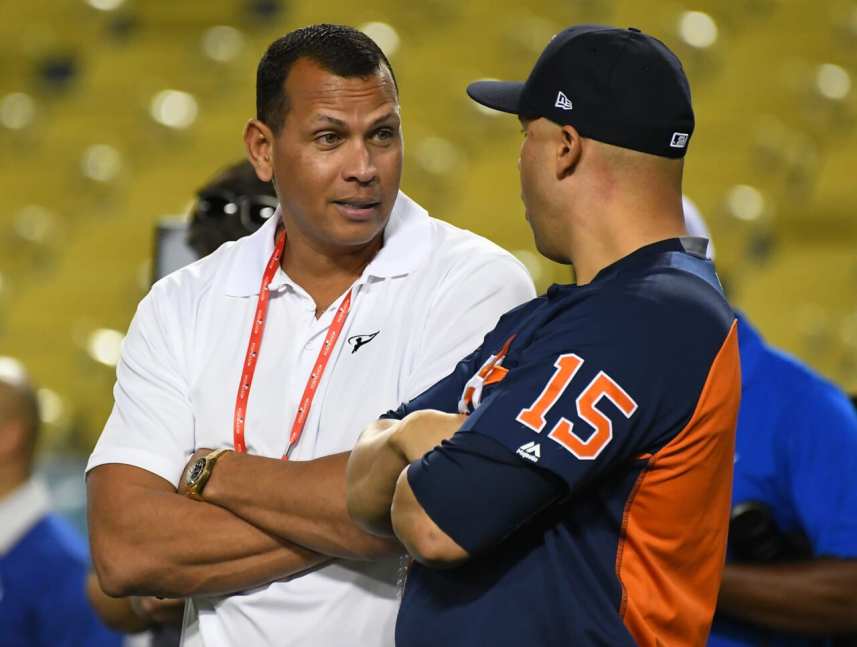
The New York Mets entertained the possibility of signing 25-year-old free agent shortstop Alex Rodriguez back in the 2000 offseason, just weeks after they lost the Subway Series to the Yankees. General Manager Steve Phillips and his staff heavily considered making such a splash, but as they later explained, they were out before they even started talking about money.
A-Rod, per the New York Post’s Mike Puma, grew up as a Mets’ fan idolizing Keith Hernandez as a kid in Miami. There had to be some degree of interesting in A-Rod’s part on going to New York to play in Queens.
However, everybody knew Rodriguez was going to be extremely expensive, maybe the most expensive free agent signing in the history of the game. He was young, good and charismatic. And Phillips, who had brought Mike Piazza a couple of years earlier and had some aging stars in the roster, wasn’t going to have much budget at his disposal.
But Phillips said recently that the New York Mets were “out before the money conversation ever happened.”
Rodriguez had some lofty demands, such as office space at Shea Stadium and a tent at spring training to sell his own A-Rod line of merchandising. Phillips thought that would have resulted in a clubhouse of “24+1” players.
However, it’s easy to imagine: what if A-Rod landed on the Mets? Would the team have won the World Series in these last few years?
Well, they certainly would have prevented A-Rod from going to the Yankees, and the Mets, most likely, wouldn’t have had the money to bring Carlos Beltran in 2005.
Did the Mets really consider signing A-Rod?
A-Rod ended up signing a 10-year, $252 million pact with the Texas Rangers. The Mets, in turn, saw Mike Hampton go in free agency and entered a decline phase that lasted until 2006, the year in which they were eliminated in Game Seven of the Championship Series on a strikeout: Beltran let an Adam Wainwright’s curveball go by.
“At the time when we were pursuing [Rodriguez], you could kind of dream about that lineup, and the offensive lineup would have been incredible,†said Jim Duquette, then the Mets assistant general manager. “He fit perfectly at least for the few years as a shortstop, because at that time it was before [Jose] Reyes had come on the scene so we didn’t have a shortstop where we could say he’s going to be our shortstop for the next 10 years.
“[Rey] Ordonez was easily replaceable. We had lost [John] Olerud and had [Todd] Zeile at first base and [Robin] Ventura at third and Edgardo [Alfonzo] at second, so we would have had a very veteran, albeit starting to age, infield. That whole building around impactful players, obviously A-Rod and Piazza were going to be the stars and they were the most recognizable. You want to talk about star power, it would have lifted our organization to a level we haven’t seen.â€
The Mets had to do some roster maneuvering, and even then, it probably wouldn’t have been enough to pry A-Rod.
“We might have had to trade some pitching away to make [Rodriguez] fit the budget,†Phillips said. “It wasn’t as simple as add 18 or 19 or 20 million [dollars] into the budget and keep the same players. It would have been some level of subtraction in order to add him, because we weren’t going to add $20 million to the payroll as a separate line item. It was going to have to be, if not all of it, there was going to have to be some offset of taking some money off the books to make it work.â€
Puma said that “if the Mets signed Rodriguez, it’s possible Phillips would have avoided his largely disastrous roster overhaul following the 2001 season, in which he traded for aging stars Mo Vaughn and Roberto Alomar. The Mets also signed Jeromy Burnitz and Roger Cedeno, both of whom underperformed in their return to Queens.”
With A-Rod in the fold, the New York Mets’ infield would eventually have been formed by Rodriguez, Jose Reyes and David Wright.